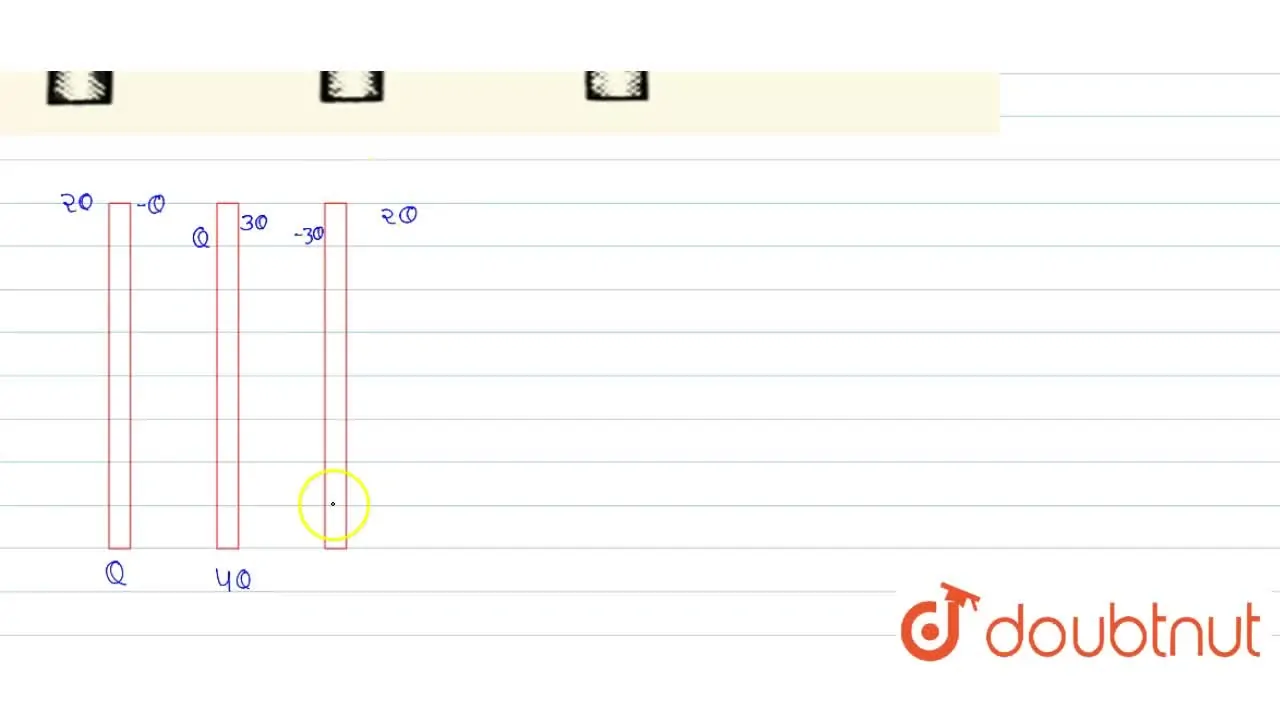Figure shows three metallic plates with charges Q, 4Q, and -Q, respectively. Determine the final charges on all the surfaces.
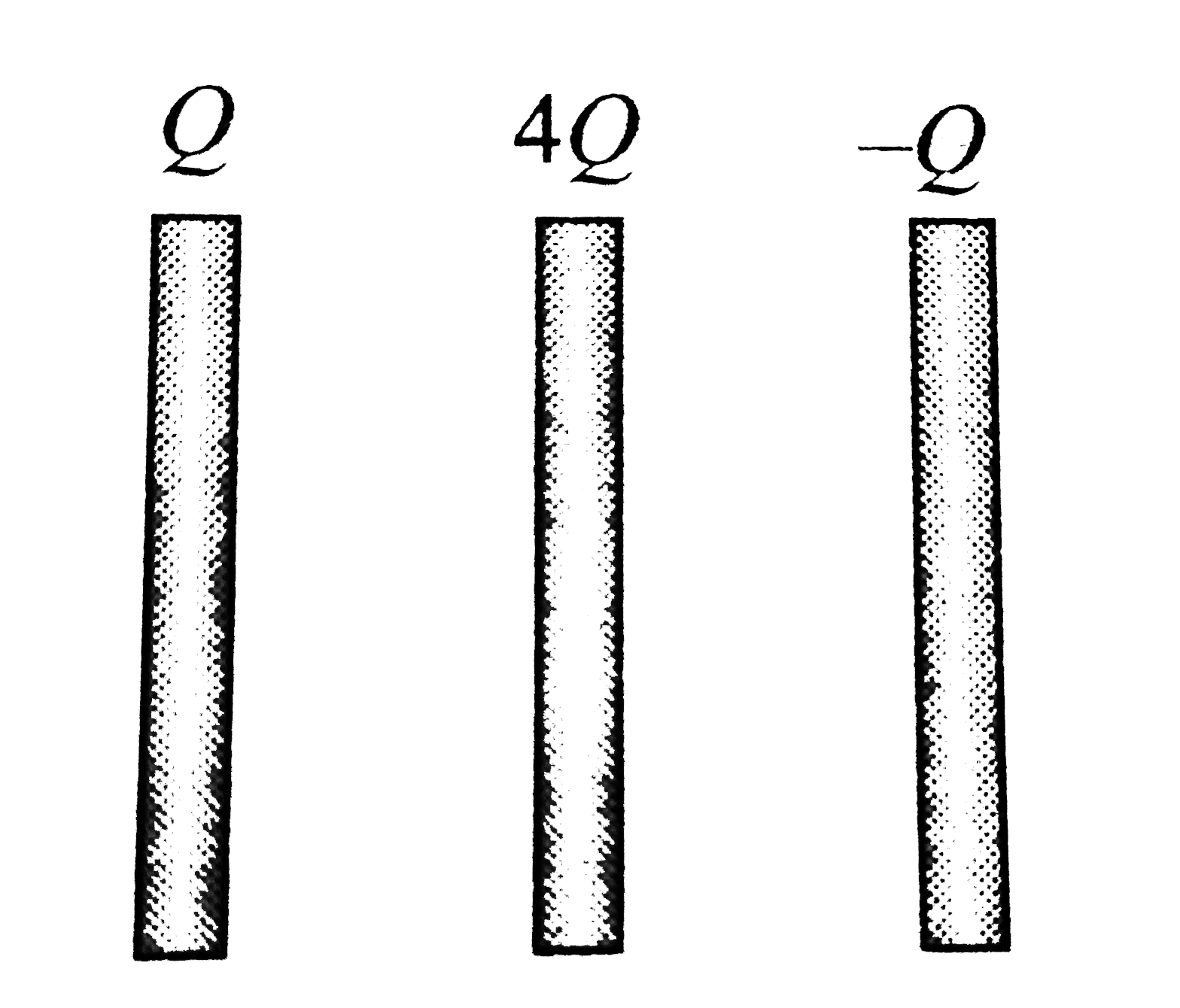
Method 1: We assume that the charge
on surface 2 is x. Following conservation
of charge, we see that surface 1 has charge (Q-x). The electric
field inside the metal plate is zero, so field at P is zero.
So the resultant field at P is −EP=
⇒(Q−x2Aε0)=x+4Q−Q2Aε0
or Q−x=x+3Q
or x=−Q
The charges on the facing
surfaces of the plates are of
equal magnitude and opposite
sign. This can be proved by
Gauss's theorem also. It is an
important result.
Thus, the final charge
distribution on all the surfaces
is shown in figure.
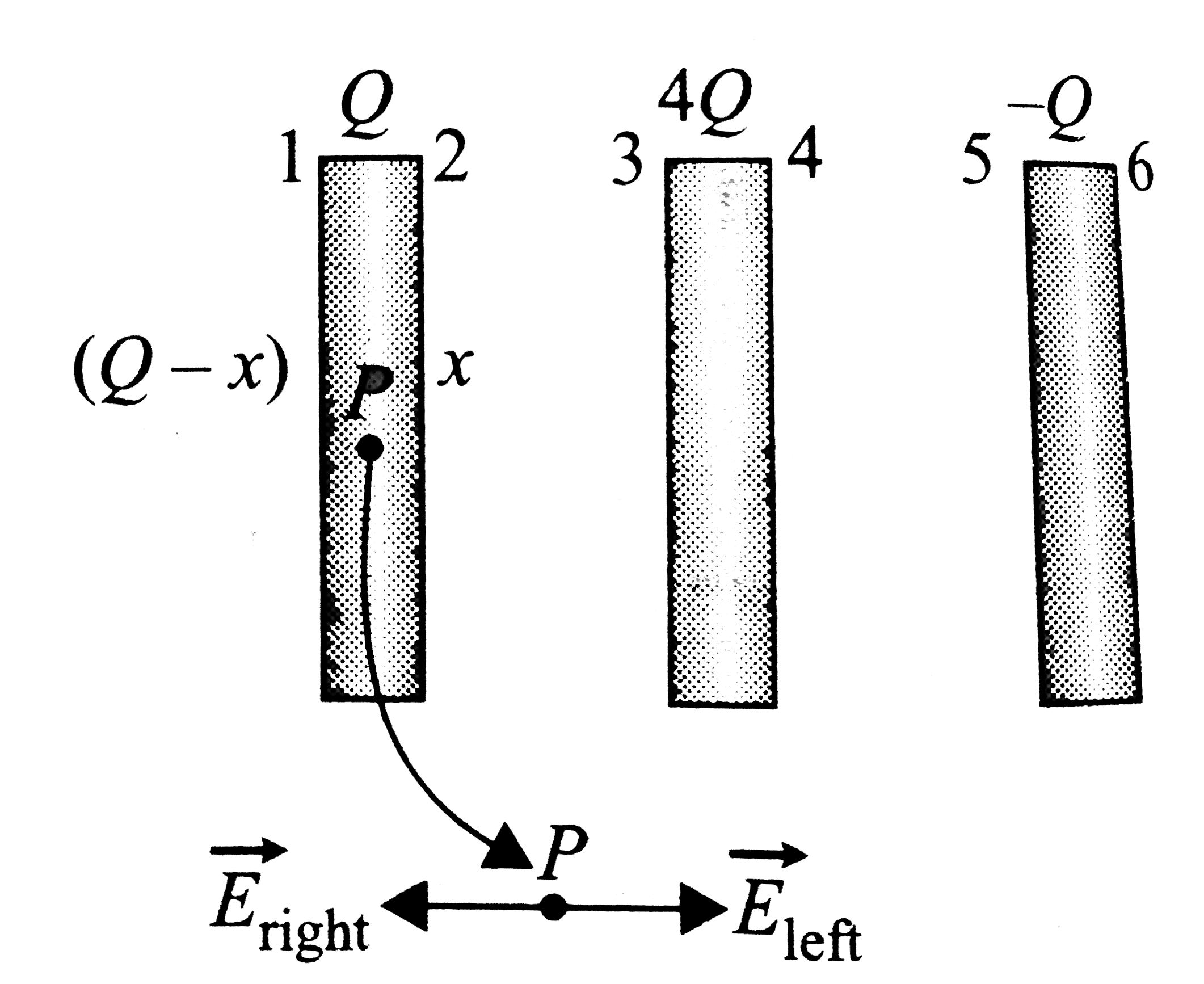
Method 2: The electric field
due to an infinite sheet of charge
is independent of distance. We
can take plates (ii) and (iii) as
one system or one plate having
charge 4Q−Q=3Q.
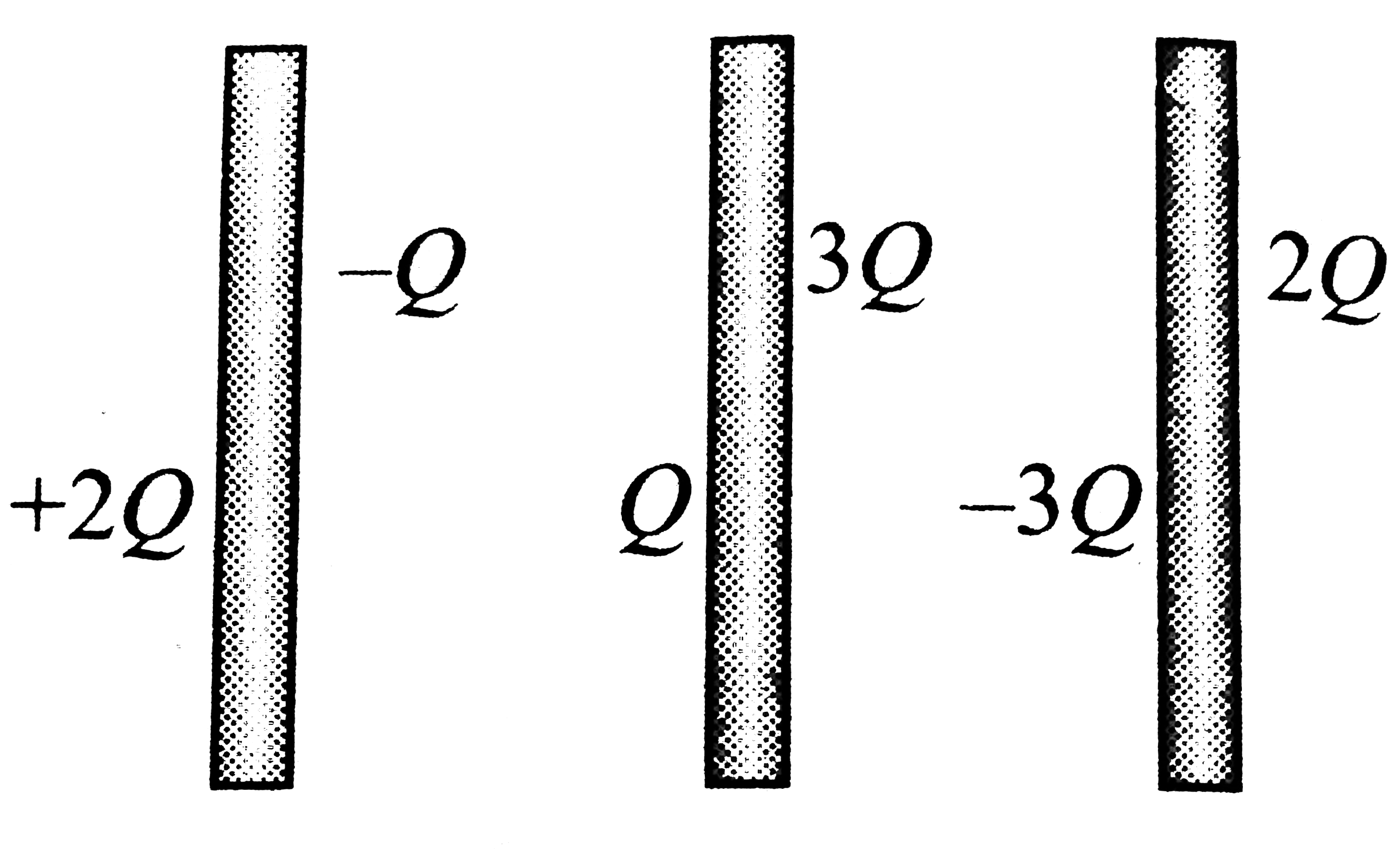

The charge appearing on surface (2) is
q2=Q−3Q2=−Q
Hence, final charge distribution is same as we calculated in
method 1.
Related Playlists
- BOOK - CENGAGE PHYSICS ENGLISHCHAPTER - ELECTRIC FLUX AND GAUSS LAWEXERCISE - Example7videos
ELECTRIC FLUX AND GAUSS LAW
- BOOK - CENGAGE PHYSICS ENGLISHCHAPTER - ELECTRIC FLUX AND GAUSS LAWEXERCISE - Exercise 2.116videos
ELECTRIC FLUX AND GAUSS LAW
- BOOK - CENGAGE PHYSICS ENGLISHCHAPTER - ELECTRIC CURRENT AND CIRCUITEXERCISE - Interger8videos
ELECTRIC CURRENT AND CIRCUIT
- BOOK - CENGAGE PHYSICS ENGLISHCHAPTER - ELECTRIC POTENTIALEXERCISE - DPP 3.515videos
ELECTRIC POTENTIAL
Similar Questions
Figure shows three large metallic plates with chrges −Q,3Q and Q respectively. Determine the final charges on all the surfaces.
 View Solution
View SolutionTwo large parallel conducting sheets (placed at finite distance) are given charges Q and 2Q respectively. Find out charges appearing on all the surfaces.
 View Solution
View SolutionFigure shows electric lines of forces due to charges Q1 and Q2 Henice

 View Solution
View SolutionFigure shows three concentric thin spherical shells A, B and C of radii a, b and c respectively. The shells A and C are given charges q and -q respectively and the shell B is earthed. Find the charges appearing on the surfaces of B and C.
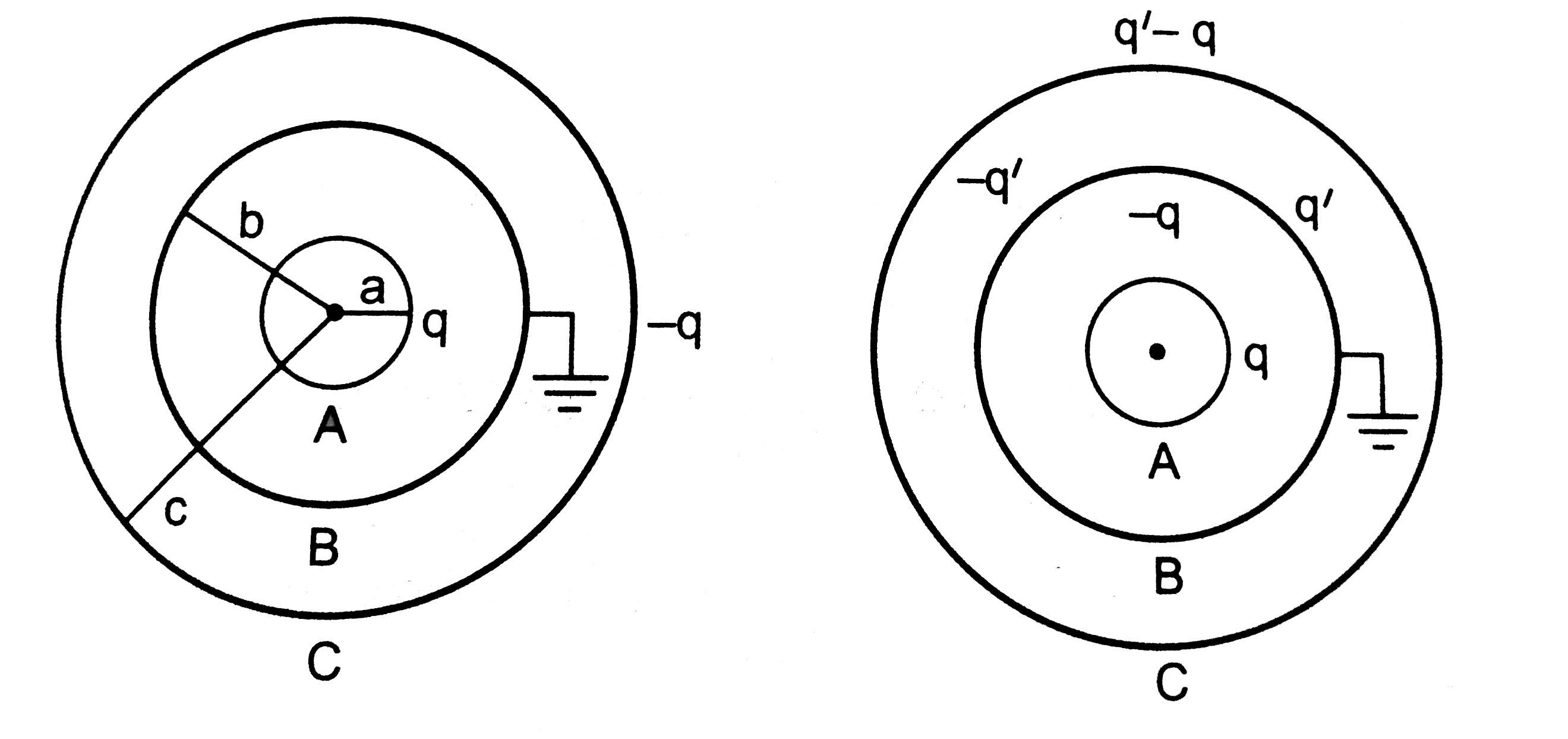 View Solution
View SolutionFigure shows three concentric thin spherical shells A, B and C of radii a, b and c respectively. The shells A and C are given charges q and -q respectively and the shell B is earthed. Find the charges appearing on the surfaces of B and C.
 View Solution
View SolutionThere are n large parallel plate conductors carrying charge Q1,Q2,………..Qn respectively.
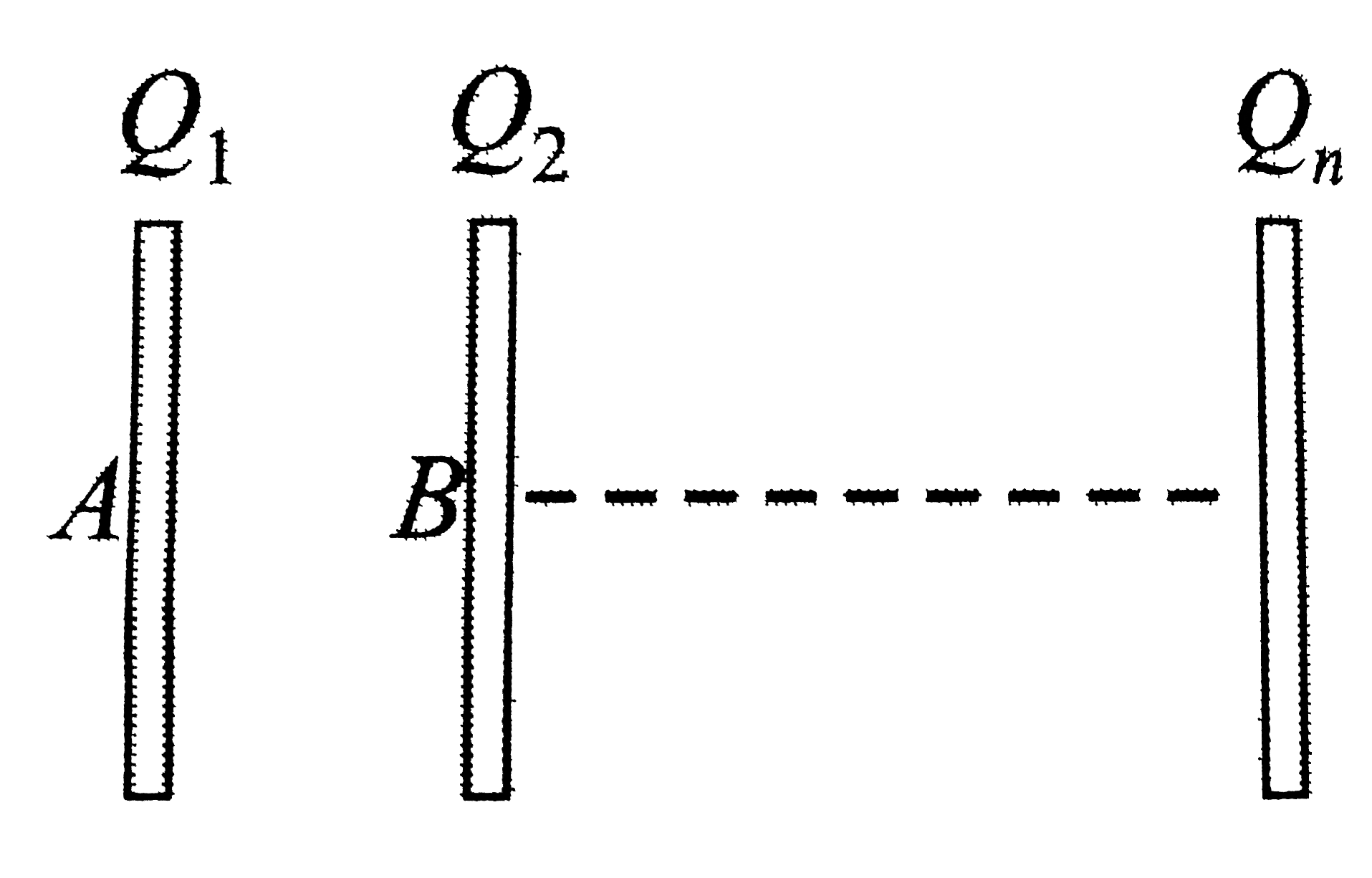
i. Find the charge induced at surface A.
ii. Find the charge induced at surface B.
iii. If the left conductor is earthed, find the magnitude of charge flowing from plate to earth.
iv. If any conductor is earthed, find the magnitude of charge flowing from plate to earth.View SolutionFigure shows thick metallic sphere. If it is given a charge +Q, then electric field will be present in the region
 View Solution
View SolutionThree concentric metallic spherical shells of radii R, 2R, 3R are given charges Q1Q2Q3, respectively. It is found that the surface charge densities on the outer surface of the shells are equal. Then, the ratio of the charges given to the shells Q1:Q2:Q3 is
View SolutionTwo parallel metallic pltes , each of tharea A are kept as shown in the figure and charges -2Q and 4Q are given to them. Edge effects are negligeble . The charges on the surface I and III are respectively
 View Solution
View SolutionShow in the figure are two point charge + Q and - Q inside the cavity of the Spherical .shell the changes are kept near the surface of the cavity on opposite sides of the centre of the shell if σ1 is the surface charge on the inner surface and Q1 net charge on it and σ2 the surface charge on the outer surface and Q2 net charge on it then :
 View Solution
View Solution

